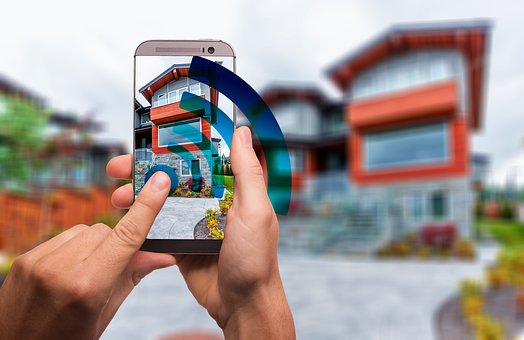The Internet of Things: Controlling your home from your phone
Computers have changed our lives forever. Computers are magical machines that can calculate and process information and therefore can decide. In simple words, they are machines with a brain. Soon this magic will spread to every home through a lot of interconnected devices, also called IoT, which will use the internet to exchange data. The Internet of things is defined as the interconnection of computing devices via the Internet embedded in everyday objects, enabling them to send and receive data.

The Internet of things (IoT) in the coming years will soon become a part of our daily life. Countless tiny chips will be woven into buildings, cities, clothes and human bodies, all linked by the internet.
In the last century, it was electricity that united consumers and businesses across the world. It gave them access to a fundamentally, universally useful good “energy” whenever and wherever they needed it. The IoT will be doing the same for information what electricity did for energy.
How the Internet of things will make our life comfortable

The clothes in the future will carry a microchip which will tell the washing machine how to treat them. Smart traffic systems will monitor the traffic on the road and distribute the cars through the city.
Your refrigerators will come equipped with cameras and will inform you over your app about the food stocked. So, if you are travelling and worried about the kid’s lunch the next day, just open the app and check if there are sufficient eggs. In case not, order it immediately on Milk basket or Amazon.

Smart homes will be the biggest part of the consumer side of IoT. The window blinds in your living room will lift just by a single command. The robotic vacuum cleaners will follow your instructions and clean the corners which attract the maximum dust.
The mattresses that claim to have health benefits will come fitted with chips that will monitor your movements and sleep patterns. It will then nag you about your poor sleep hygiene.
We are already using the Internet of things at present
People who are Lloyd Air conditioners consumers can download an app on their phone and using it switch on the AC even before they reach home. They can set the temperature as per their choice just by setting it on their mobile.
Pampers, an America firm has announced Lumi, a sensor designed to be clipped to disposable nappies. It monitors the sleep pattern of the child and alerts the parent on their smartphone when their baby needs a change.

Whirlpool, one of the giants of home appliances offers smart dishwashers that can be remotely controlled by a smartphone app. The same app can scan food barcodes and convey cooking instructions to an oven.
People who are using Alexa from Amazon at home have the option to connect their television and speakers to Alexa. Alexa (for people who are not aware) is a wonderful speaker from Amazon who can listen to your voice command and follow your instructions. You just give a voice command to Alexa and it will show your favourite serial on the TV or play the song of your choice on its speakers or any connected speakers. Through Alexa, you can also control the lighting of your home. Google also has a similar speaker called Google home.
Amazon has just launched 15 new products including Alexa Echo speakers.Learn more on clicking the link:
The Internet of Things in the future

In a connected, computerized homes in future gizmos will become even more high-tech. Imagine you are watching a horror movie on a smart TV. The TV is connected through a device (Amazon Alexa) to the speakers in all the rooms and as well as to the lights. As the horror plays on, you can see the lights flickering in your room or listen to an eerie sound coming from your next room.
Viewers of “12 Monkeys”, an American science fiction TV series released in 2015, can download an app that will sync with the light bulbs. The bulbs will automatically change their colour and brightness to match the mood of an episode moment by moment.

Voice control will play an important role as a central speaker like Amazon’s Alexa or Google Home will become a central hub controlling smart gadgets at home. Consumer goods companies are ensuring that the devices they build are compatible with Google and Amazon speakers.
Smart Chips will be driving IoT
Arm, a British based leading chip designer is working on a project to design a chip that can sample odour and chemicals in its environment. The chip once woven into items of clothing will let the wearers know when there is a need for a shower. Apart from hygiene, sensors could be built into food packaging, where it could replace printed expiry dates. The sensor will do an accurate assessment of when the contents of a package have become non-consumable. It will help supermarkets and shoppers reduce wastage.
Rolls Royce, another British company that makes jet engines for aircraft uses IoT for real-time monitoring of its engines. The firm’s engineers can watch engines wear out as they fly. In case the engines need fixing, the repair teams take care of it on the ground.
IoT also has a downside
Smart TV also keeps a track of what the users are watching. Data like programme choices, viewing habits, preferred time of watching is sent back to the company. Companies sell these data to advertisers and program-makers who use machine learning to crunch the data and get relevant information. The company, on the other hand, can subsidise the price of the TV. It is ok until this point. But some TV’s may even snoop in on the background conversation and this is were IOT becomes dangerous.
How much data a consumer wants to share with the company is something that needs a debate. In some countries like Asia, consumers are willing to share data in return for a price but Westerners are not.
In 2016 millions of people in America couldn’t access websites including Netflix, Amazon, Twitter. The reason was an IoT focused malware called Mirai. Mirai had exploited a list of default user names and passwords and infected hundred and thousands of connected devices from smart energy meters to home CCTV cameras.
Privacy a concern as IoT will make snooping possible
Ransomware is a commonly used tool by hackers. It prevents the use of a computer until cash is paid. In a world where everything is connected, devices can be easily infected with Ransomware and people blackmailed for money.
Ring, an Amazon subsidiary makes camera-equipped doorbells. It keeps a track of every person who visits a house. The police department in the US can request to access this information from the company. Snooping into persons home and its recordings shared, is something that goes against privacy.

But every technology has its advantages and disadvantages. With a proper legal framework where user’s consents is a must, the Internet of things may not be such a bad thing.
To read more such similar stories click on the following link:
Driving an Electric Car: Charging ahead with full power
The Future of Flying: Now boarding from Gate of Innovation
Acknowledgement:
The Economist: Issue dt - Sep 14th 2019 / Technology Quarterly on The Internet of Things.












Comments
1 Comment
[…] The Internet of Things: Controlling your home from your phone […]
Leave a Comment